Battery Basics: Part Two
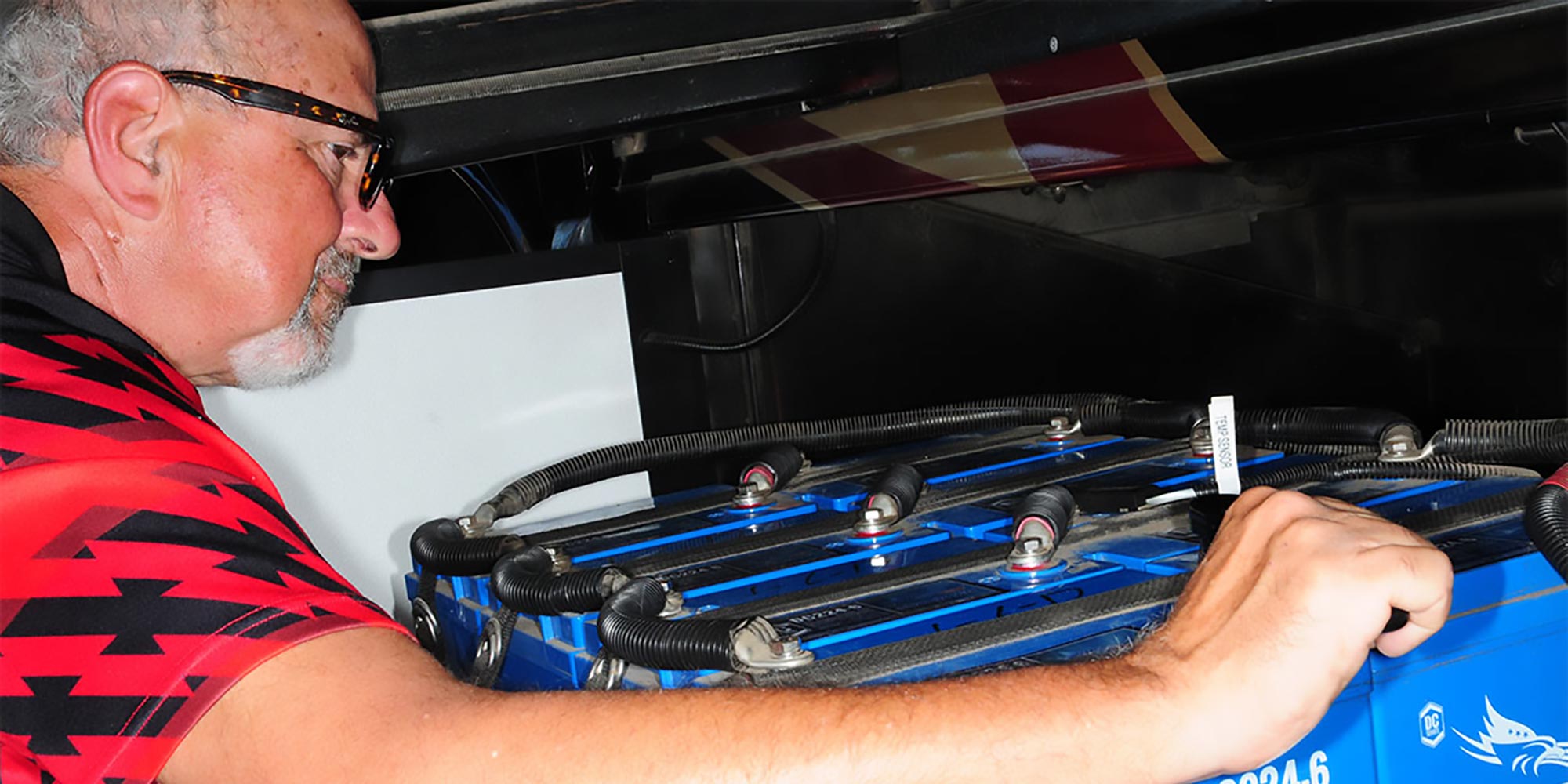
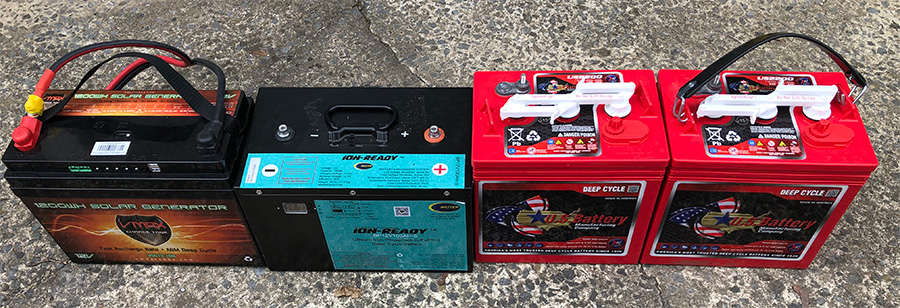
Match Your Charger to Your Battery Chemistry
While FLA (flooded lead-acid), AGM (absorbed glass mat) and lithium (lithium iron phosphate or LiFePO4) batteries can be dropped into most any RV and provide nominal 12-volt power, each of them behave differently while charging. Not understanding this can shorten their lifespan considerably and even destroy them in short order.
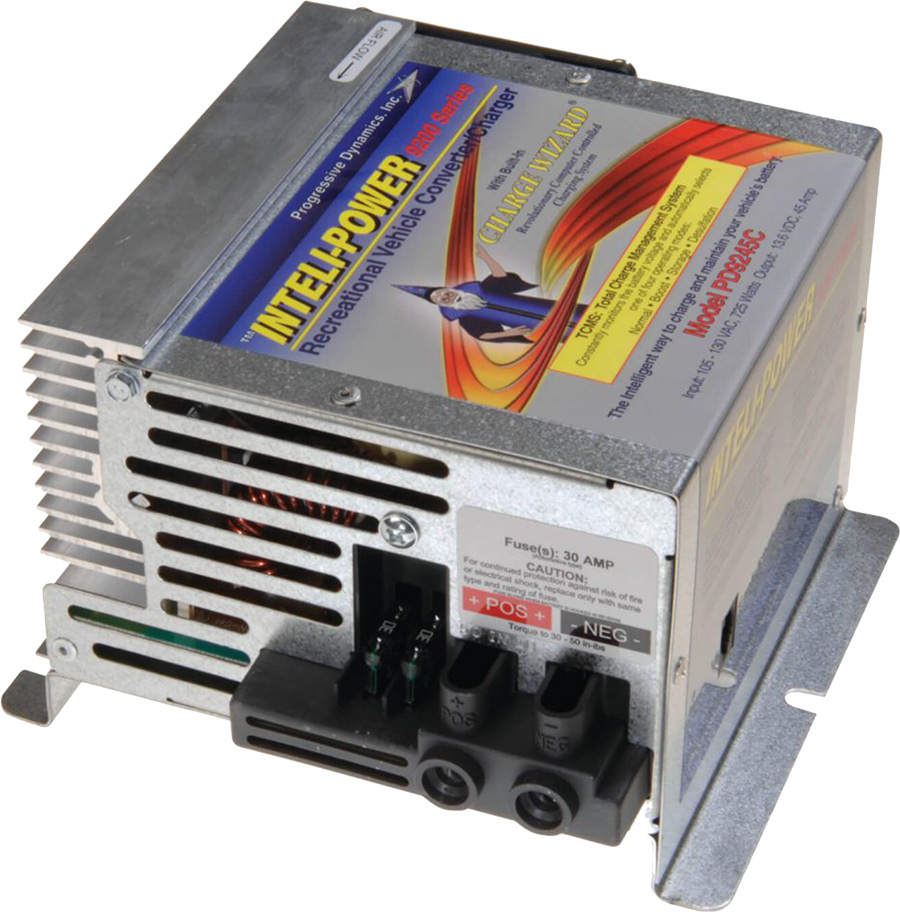
I am frequently asked why the plug/receptacle between a tow vehicle and trailer doesn’t provide enough charging current to even keep the RV’s residential refrigerator operating without running down the RV battery. Here’s the sad news: You’ll be lucky to get more than 4 or 5 amperes of charging current though that 7-pin connection. That’s little more than a trickle charger — especially when it’s trying to power a residential refrigerator. A typical residential refrigerator that draws 5 amps at 120-volts AC will require 10 times that current from the 12-volt battery. It could easily be drawing 50 amps from your battery while the compressor is running; that will drain a 100 amp-hour (AH) battery totally flat in a few hours of compressor time.
Speaking of solar panels: Never try to connect solar panels directly to your RV batteries. While it might take a day or more to fully charge your RV batteries from a modest number of solar panels, there’s nothing to stop the solar panels from overcharging your batteries and destroying them. So always use a solar charge controller that is compatible with your battery chemistry.
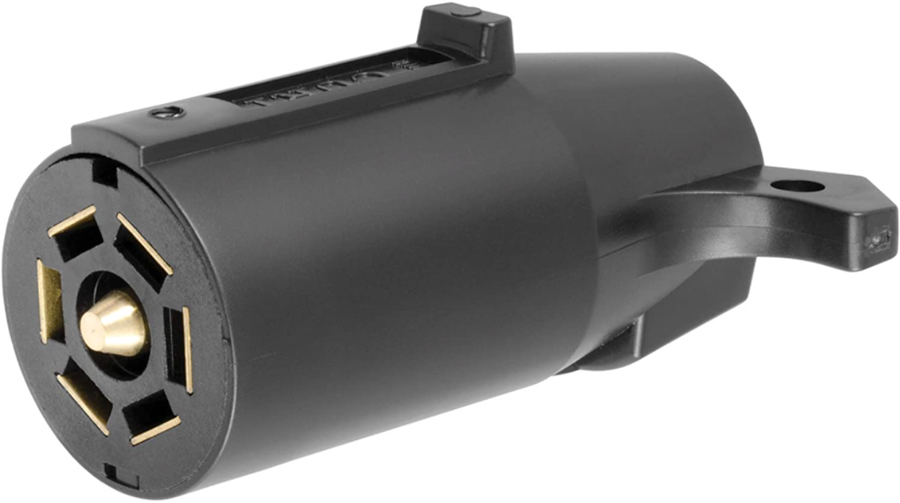

Charging RV Batteries from a Portable AC Generator
All this stepping up and stepping down of voltages may seem counterintuitive, but don’t use the 12-volt DC charging outlet on an inverter generator. Not only is it limited in the amount of current it can provide (typically around 7 amperes), it’s also not voltage- or current-regulated. This means it will take a long time to charge your batteries fully — then it will proceed to overcharge them.
The best way to charge RV batteries from a portable AC generator is to simply plug the shore power cord into the generator directly, using the appropriate dogbone adapters. For example, a 2,000-watt generator will easily be able to provide up to 10 amps or so of 120-volts AC, which an RV’s charger will turn into up to 80 to 100 amps of 12-volt DC charging current. And, because you’re now using the charge controller in your converter/inverter/charger, generator power is now matched to the battery voltage and amperage charging requirements.
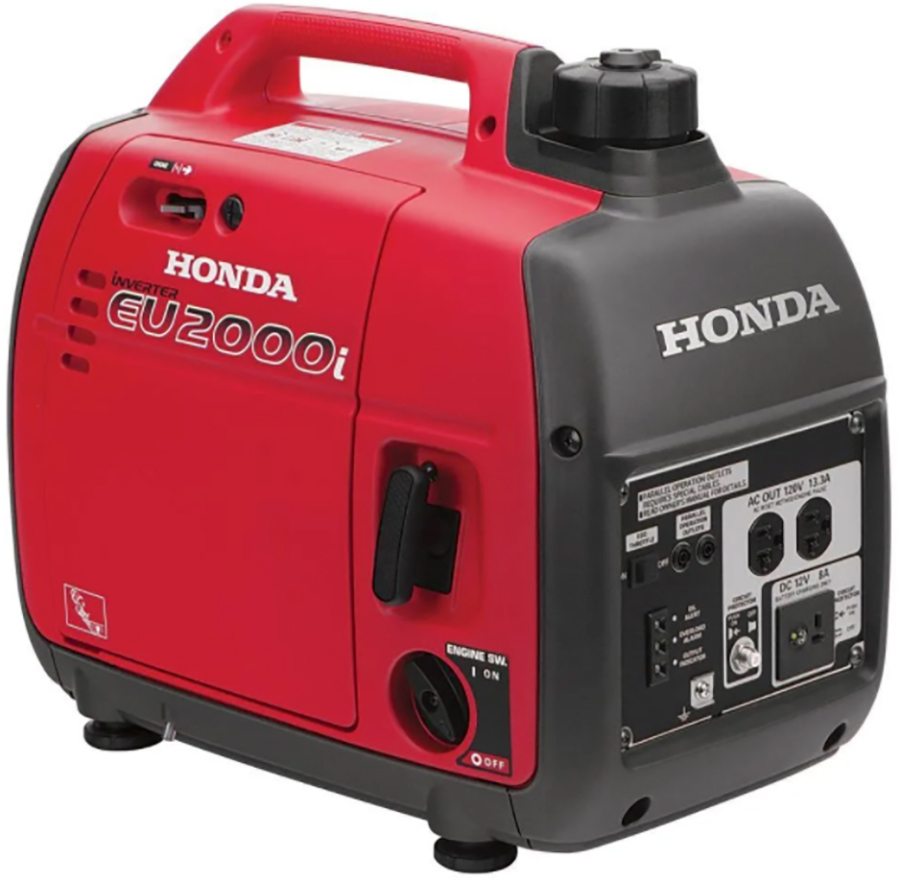
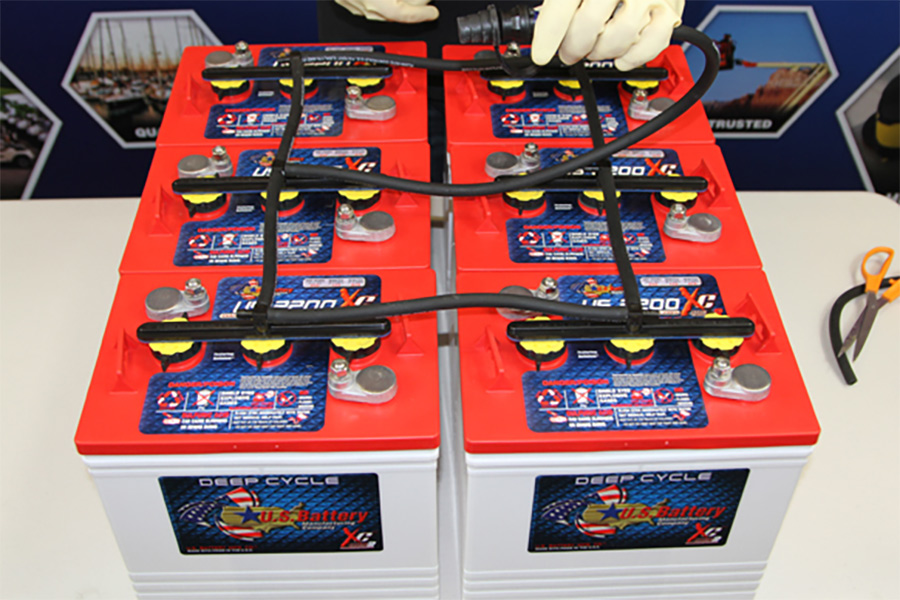
Battery Maintenance
While a car battery may not require this amount of care, FLA batteries in an RV application are a different animal, because they may go through dozens of deep charge/discharge cycles every month — and every time they’re recharged, they lose a little water vapor. It’s possible, therefore, to have the water level get too low in just a month’s time — and once the water level gets low enough to uncover the plates, the battery is heading for an early death.
While refilling an RV’s FLA batteries with distilled water isn’t the most glamorous job, you can certainly make it a lot easier with a single-point watering system from Flow-Rite (https://amzn.to/3mOQjEQ). This allows you to refill all six or more cells at the same time with a single water container. Such a system should be a “must-have” for anyone using FLA batteries, and they’re available for 6- and 12-volt batteries. AGM batteries don’t require the same type of periodic maintenance, so they’re a good choice for battery systems that may need to be unattended for months at a time. However, you still have to be careful not to overcharge them. Lithium batteries require the lowest maintenance of all if properly designed and built. Another big advantage is that they can be disconnected and will self-discharge at less than 1% per month — you can literally disconnect them and leave them without a charger connected to them all winter or even all year. Many lithium battery makers suggest they be discharged down to 50% SOC for winter storage, while others recommend they are completely charged to 100% SOC before storage. Be sure to check with the particular manufacturer to see what it recommends.
What about FLA and AGM trickle charging?
Well, you don’t want to leave any two-stage charger connected to RV batteries or risk boiling out the water and getting sulfuric acid all over the place. That’s why battery maintainers (or tenders) were created. These are essentially “smart” chargers that will taper the charging current down to the fraction of an ampere (milli-amps) needed to keep RV batteries fully charged through the winter/storage months. If you don’t have a modern charger/converter with this maintenance/tender function, you can get an outboard one from a company like Battery Tender (https://amzn.to/3a8KLzS) that you can clip right onto your battery terminals directly.

Parasitic Current Drain
It’s well worth knowing — and remembering — that even when everything inside of an RV is powered off, everything using 12-volts DC will likely still be drawing a little current while in sleep mode. This is enough parasitic current to drain an RV battery in months or even weeks. That’s why many manufacturers have included a battery ON/OFF switch as part of their 12-volt DC system. However, turning that battery switch to OFF may also disconnect the charger. This is why if you’re plugged into shore power, your battery switch should stay on. If you have a solar charging system, it may or may not be affected by the main battery disconnect, and simple testing with a multimeter can usually answer this. If you’re charging with a Battery Tender, though, then turning the battery switch off is fine.
Should you bring your batteries into the garage over the winter?
Unless you’re worried about thievery, I would say that leaving them in the RV is the safest way to go. Just disconnecting those heavy cables can be dangerous if you’re wearing any jewelry that can short out to the chassis, and the sulfuric acid can wreck your vision if you get it in your eyes. I receive dozens of emails every spring from readers who hooked up the cable incorrectly and reversed the polarity. If you’re lucky, that will only blow the DC fuses on the inverter — but it can destroy some 12-volt DC appliances such as a refrigerator, furnace circuit board and tank monitoring system.
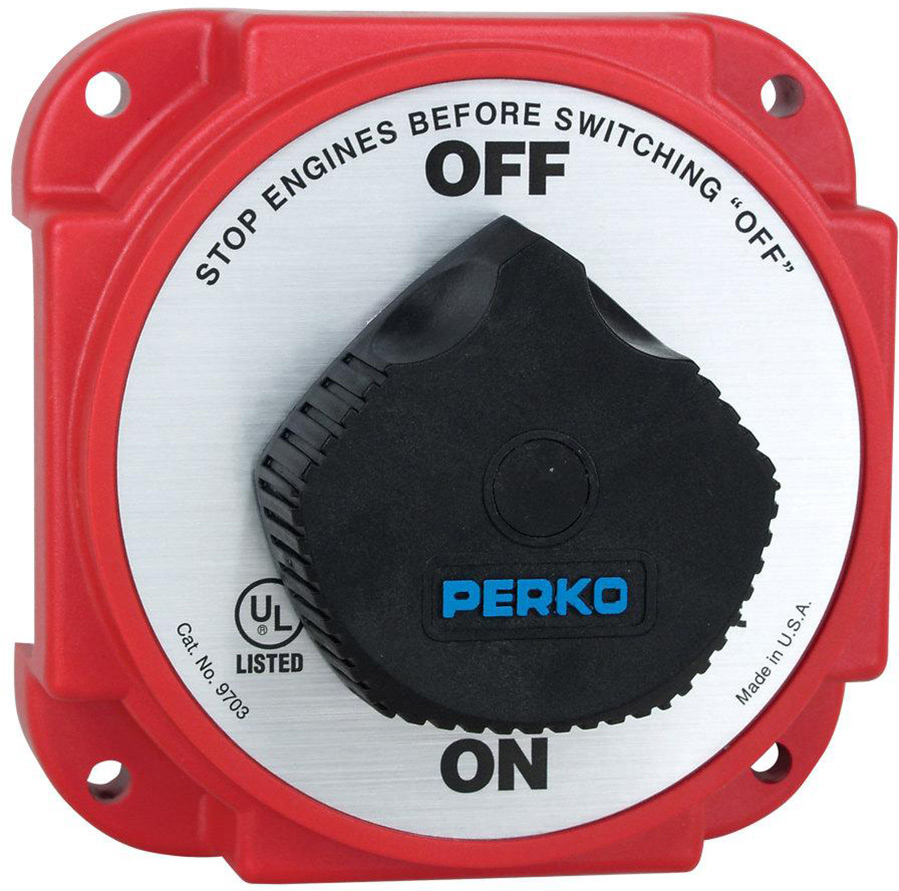

Battery Tender
(877) 456-7901
batterytender.com
Flow-Rite
(616) 583-1700
flow-rite.com
Progressive Dynamics
(269) 781-4241
Progressivedyn.com
REDARC Electronics
(704) 247-5150
redarcelectronics.com

Mike Sokol’s lifelong interest in electricity started when he was just 8 years old; by the age of 14, he had taken the U.S. Navy’s course on tube theory. Holder of a mechanical engineering degree and a Master Electrician’s license, he is the moderator of the AC Power & Grounding Forum and has been an active participant in dozens of forums through the years. An accomplished musician who also has presented seminars on surround-sound production and large-sound-system design and operation around the country, he formed No Shock Zone Inc. to fund many projects found on his RVelectricity Facebook group and YouTube channel. He can be reached at: [email protected].
Already a Subscriber? Click here for Access to the Full Issues.

